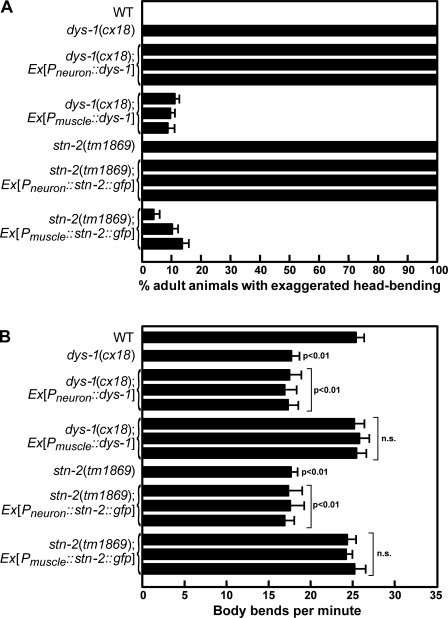Figure 1.
dys-1 and stn-2 are required in body-wall muscles, but not neurons, to regulate locomotion behavior. (A) Quantification of young adult animals that exhibit exaggerated head bending during locomotion. Two sample sets were analyzed for wild type (WT), dys-1, and stn-2, in which n = 50 for each set. This phenotype is suppressed in dys-1 and stn-2 animals when the respective gene is expressed in the muscle (driven by the myo-3 promoter) but not in neurons (driven by the unc-119 promoter). Three independent transgenic lines were analyzed for each construct. The error bar of each transgenic line shows the standard error of the proportions of four sample sets in which n = 50 in each set. (B) Quantification of body bends per minute for the different strains (see Materials and methods). Three independent transgenic lines were analyzed for each construct. The error bars show the standard error of proportions of four sample sets in which n = 15 in each sample set. Statistical significance was assessed by Student’s t test as compared with wild-type animals.

